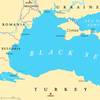Attracting More People of Color to the Maritime Workforce
In the United States, marine transportation is responsible for $361 billion, or 1.7% of the U.S. Gross Domestic Product (GDP). Marine transportation, a key part of global logistics and responsible for 40% of international trade, goods and services, is the backbone of U.S. trade. In the U.S. in 2021 alone, ships have transported more than 1.5 billion tons of cargo valued at more than $1.5 trillion; in that same time period, U.S. ports have facilitated approximately 450,000 ships, which is more than 10% of the global amount (McLean, 2021). Some examples of international maritime cargo include containerized freight; dry bulk ships for grain bulk, palletized and non-containerized cargo; tankers for energy products such as oil, gas and crude; cruise ships and ferries for tourism; and roll-on/ roll-off for vehicular trade.
According to the International Maritime Organization (IMO), the maritime industry directly employs more than 2 million seafarers – the vast majority in high-paying jobs (in May of 2022, the U.S. Bureau of Labor Statistics reported that the national average salary for Merchant Mariners was $104,190). A diverse range of career prospects exist in various fields, which include but are not limited to seafaring jobs. Commonly available career options include:
- Merchant mariners (deck and engineering officers)
- Harbor pilots
- Shipbuilding and repair personnel
- Maritime asset construction crew
- Naval architects
- Port operations personnel
- Marine biologists
- Marine insurance specialists
- Marine technology specialists
- Marine conservation specialists
- Maritime law specialists
Despite this range of professions and opportunities, the percentage of people of color who work in these roles is incredibly low – approximately 6.9% (Zippia, 2022) – but it doesn’t have to stay this way. Increasing diversity in the maritime industry can be achieved by implementing education and training programs that target underrepresented groups. Such programs can provide individuals with the awareness, skills and knowledge required to enter the industry and create opportunities for career growth. Outreach and recruitment initiatives can also be focused on underrepresented communities to encourage more diverse participation. These efforts can help bridge the gap between communities and the maritime industry and provide a pathway for people from diverse backgrounds to access maritime careers.
There are various training programs to become a professional merchant mariner, harbor or docking pilot, or another maritime-related profession, but the most efficient path is one offered by the maritime academies. There are six federally funded maritime academies in the United States, each offering a variety of degree and training programs that prepare students for careers in the maritime industry. Here are some examples of the degree programs offered by the academies:
- Bachelor of Science (B.S.) in Marine Transportation: This degree program is designed to prepare students for careers as ship officers, pilots and other roles related to the safe and efficient operation of vessels. Coursework typically covers topics such as navigation, marine law, cargo handling and ship management.
- B.S. in Marine Engineering: This degree program focuses on the design, operation and maintenance of the machinery and systems that power ships. Coursework typically covers topics such as thermodynamics, fluid mechanics, electrical systems and shipboard machinery.
In addition to degree programs, maritime academies offer hands-on training and practical experience through programs such as sea term, which involves spending time aboard a commercial vessel to gain practical experience in the operation and management of maritime transportation and engineering. The academies also provide training in survival at sea, firefighting and other essential skills needed for a career as a merchant mariner.
Making professional maritime training more accessible to people of color requires a multi-faceted approach that addresses both financial and cultural barriers to entry. This can be accomplished by implementing the following strategies:
- Providing financial assistance to underrepresented communities to cover the cost of training programs in the form of scholarships, grants or low-interest loans can help to lower economic barriers and encourage participation.
- Outreach and marketing campaigns targeted at underrepresented communities can help increase awareness of maritime training programs and opportunities.
- Partnering with educational institutions to create internship programs that offer opportunities for students from diverse backgrounds can help provide experience in and exposure to the maritime industry.
- Partnering with community organizations that serve people of color can help establish candidates interested in maritime training programs. These organizations can also provide additional support and resources to help students succeed in their training.
- Providing mentorship and tutoring can help individuals who may struggle with the coursework to stay on track and get the support they need to succeed. Similarly, developing customized training programs for individuals who require extra assistance can offer a route toward achieving success in more challenging coursework.
Having someone who looks like you in key parts of an organization can be a powerful motivator for minorities who aspire to pursue their dreams. When people see others who share their background and experiences succeeding in leadership roles, it can incentivize them to believe that they too can achieve success.
Proper representation helps to break down the perception that success in certain fields is reserved for a particular group of people. When individuals from diverse backgrounds are visible in positions of power and influence, it sends a message that the organization values diversity and inclusion. This, in turn, can help to attract and retain a more diverse talent pool, which benefits everyone.
The author
Lieutenant Albion Llewellyn is an assistant professor and faculty athletic representative at Massachusetts Maritime Academy.














